Titan may be the best place for a colony in the solar system.
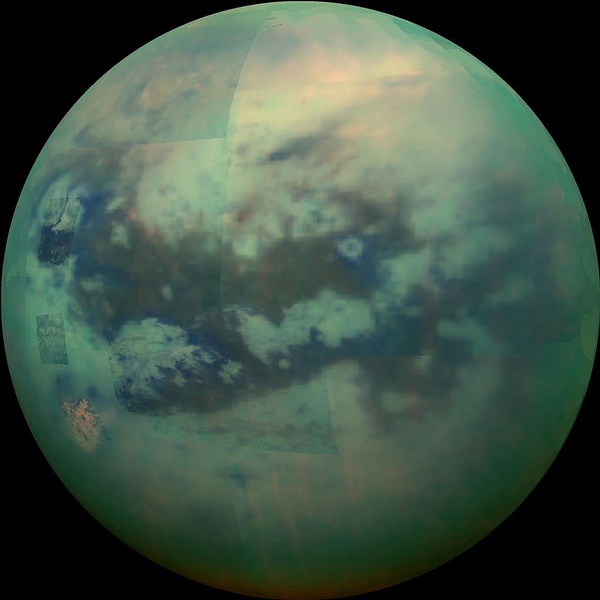
Composite photograph of Titan in the infrared range from the Cassini spacecraft
In the coming decades, mankind plans to establish the first space bases outside of the Earth’s orbit. The adopted space programs of the United States and other countries imply manned flights to the Moon and Mars. It is clear that such a choice is dictated primarily by the fact that the Moon and Mars are closest to Earth. Climatic conditions there seem quite acceptable, unlike other inner planets.
Other terrestrial planets, Mercury and Venus, have an extremely hostile climate. Mercury is too close to the Sun, so the sunny side heats up to +430 ° C, and the atmosphere of Venus is too poisonous, very heavy and heated to a crazy temperature due to the greenhouse effect, which went out of control. For this reason, on the surface of Venus is even hotter than on Mercury, and even atmospheric pressure is about 93 atm.
In general, Mercury and Venus are not colony options at all. There even robots will not be able to survive for any long time (the record for the duration of the spacecraft operation from the surface of Venus is about two hours).
')
Remains the Moon and Mars?
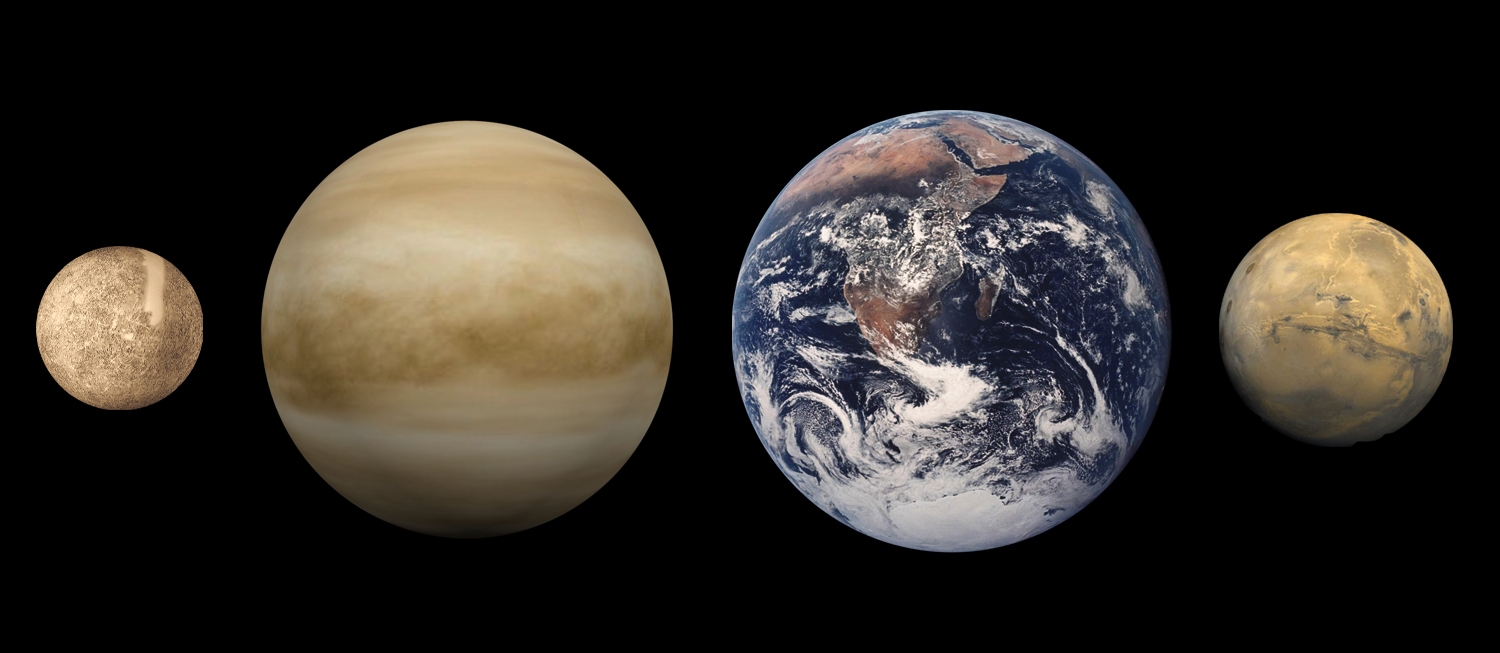
Comparative sizes of terrestrial planets: Mercury, Venus, Earth, Mars
But here too, things may not be as optimistic as it seemed at first glance. These cosmic bodies lack a magnetic field and a dense atmosphere, protecting the surface from a powerful stream of charged particles from space, including the solar wind. It is still not clear how to protect people from harmful solar radiation.
Scientists believe that the magnetic field on Mars disappeared about 4.2 billion years ago, when the geodynamo effect of convection (movement of fluids) in the core of the planet suddenly disappeared. Since then, Mars has come under the constant bombardment of ionized particles of the solar wind, which in the next 500 million years has slowly blown away the atmosphere from Mars.
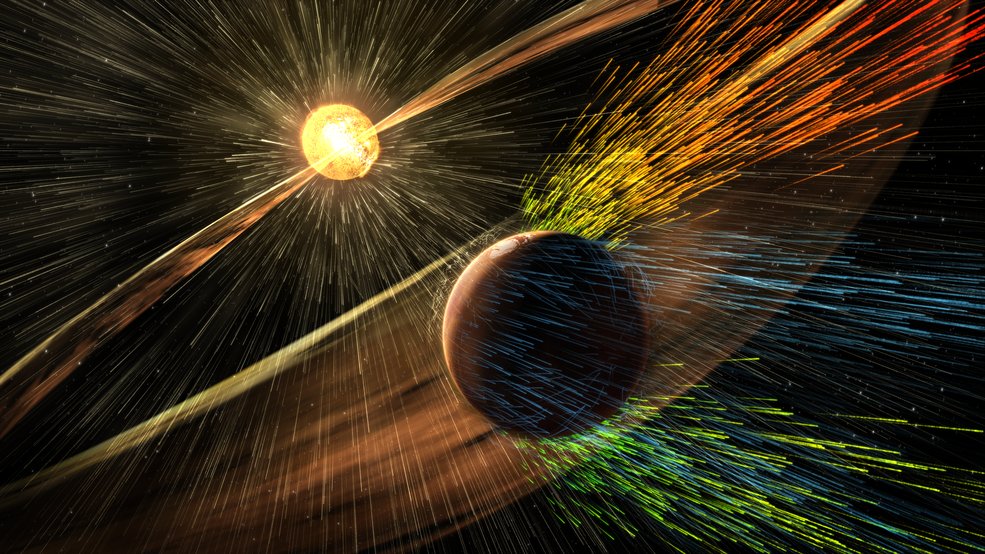
Creative render of the solar wind on Mars. Image: NASA / GSFC
According to the measurements of the Mars Odyssey spacecraft, the constant background radiation on Mars is about 2.5 times higher than on the ISS - 22 mrad per day (8 rad per year). For a year and a half, the spacecraft also recorded two proton events, when the radiation went offboard for 2000 mrad per day and several more events when the level exceeded 100 mrad per day. For comparison, the inhabitants of the Earth receive an average of 0.62 mrad per year. That is, for one proton event on Mars, a colonist will immediately receive a three-year radiation rate at once. Scientific studies show that such exposure has a negative effect on human health, leading to degradation of tissues, cancer and brain damage .
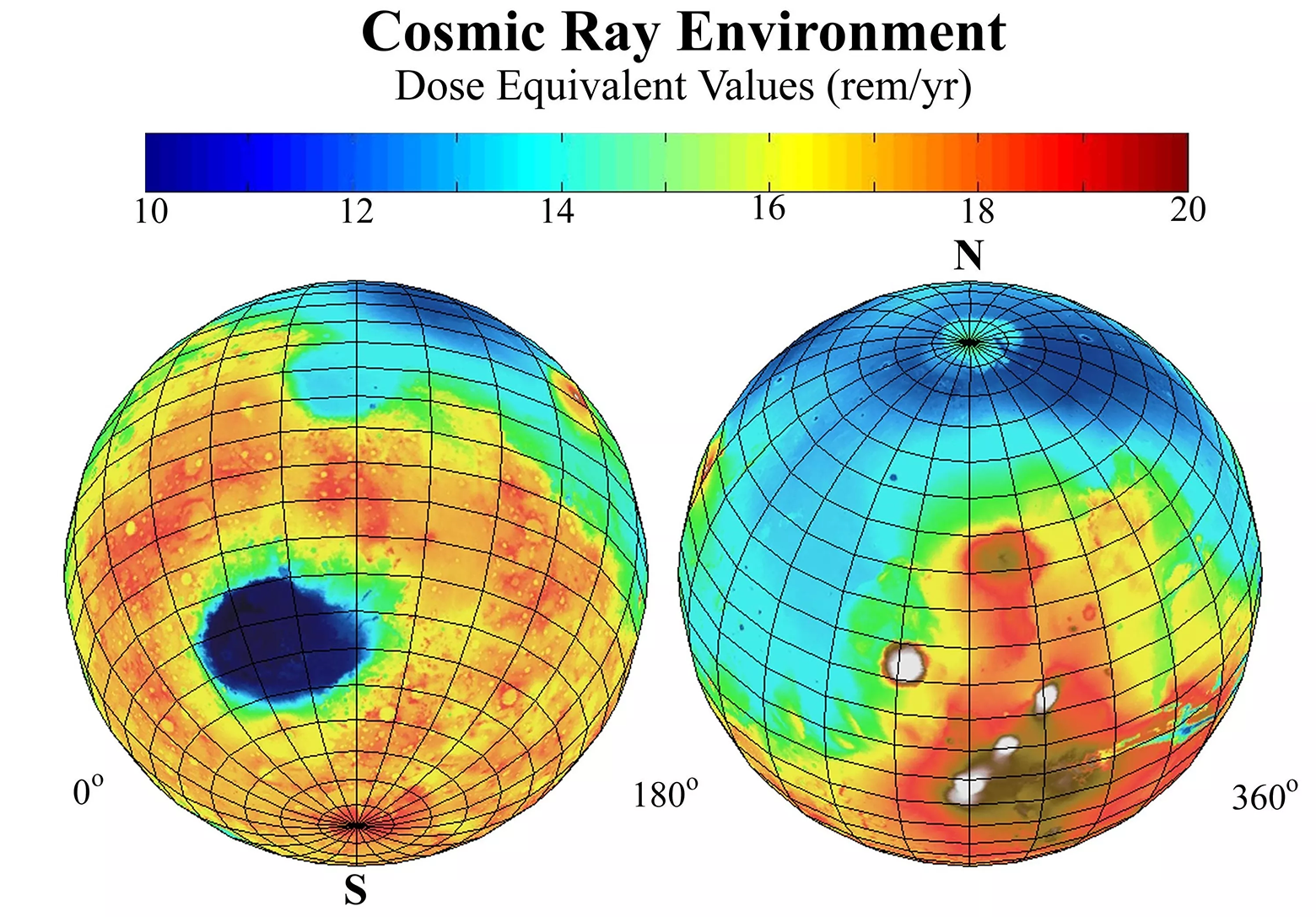
The level of cosmic radiation on the surface of Mars. Illustration: NASA
Now NASA and other organizations are looking for the best way to protect colonists from radiation. It seems that the only real option is the construction of underground colonies. But this is not a good choice for a long-term colony for hundreds and thousands of years. It is necessary to carry out a huge amount of excavations in order to free up space for housing, production areas, growing crops, mining minerals, etc. The question is - what is all this for? After all, you can live underground without flying to another planet.
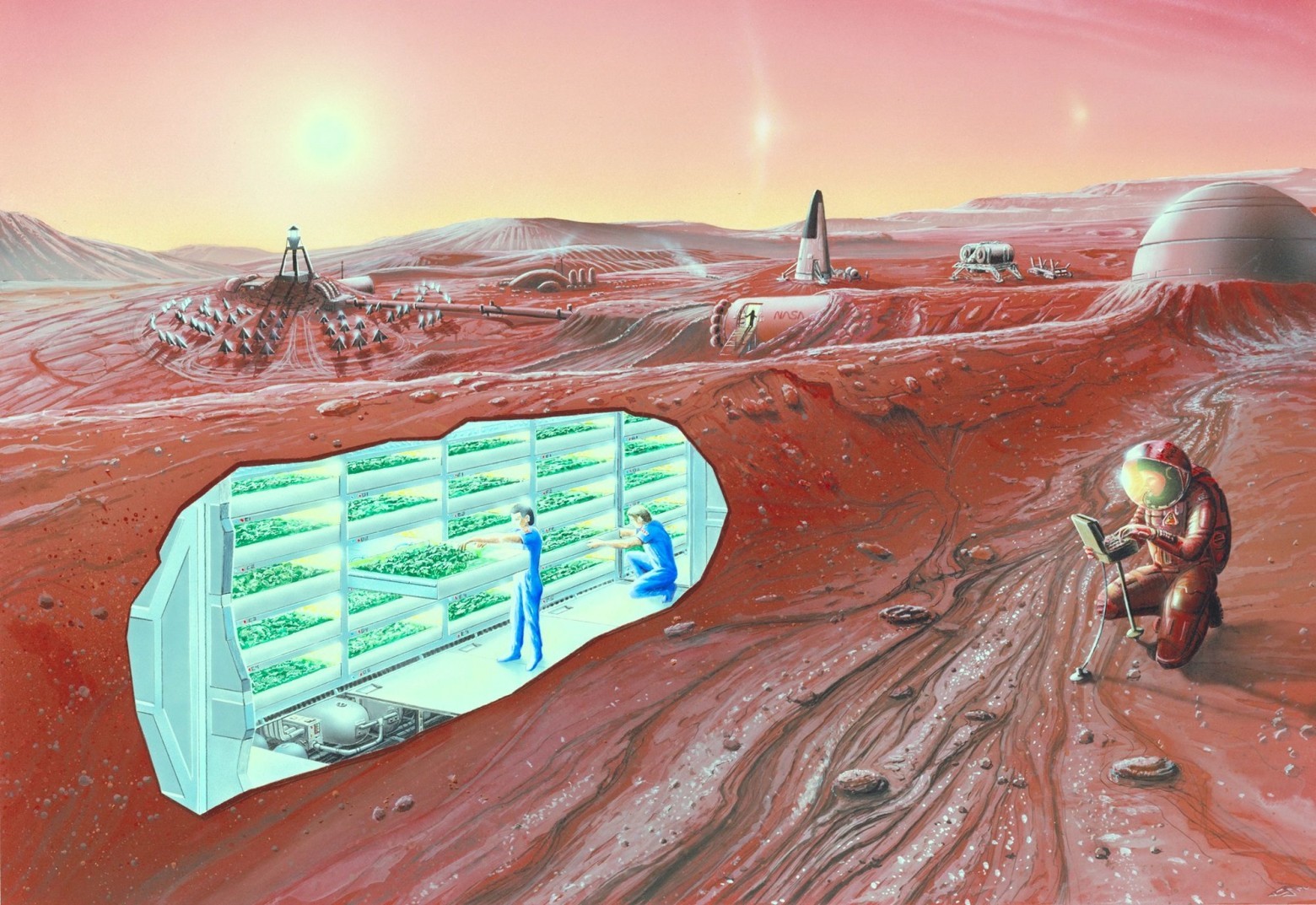
Underground dwellings on Mars. Creative render: NASA Ames Research Center
Some scientists, including NASA planetary scientist Amanda R. Hendrix (Amanda R. Hendrix) believe that the only option for placing a colony within the solar system is not the Moon and not Mars, but the largest satellite of Saturn - Titan. This is the only place in the solar system outside the earth’s orbit where people can live on the surface .
This assumption sounds a little unexpected, given the temperature on the surface of Titan in the region of -180 ° C, rains of methane and ethane, which flow into the sea of hydrocarbons. Nevertheless, scientists believe that this is the only place where people can build a long-term self-sufficient colony.
Despite the temperature and other factors, Titan more than all the other planets and satellites like our Earth. Even those seas and lakes from methane and ethane are surprisingly similar in appearance to the terrestrial seas and lakes. Dunes from solid hydrocarbons also resemble terrestrial sand dunes.
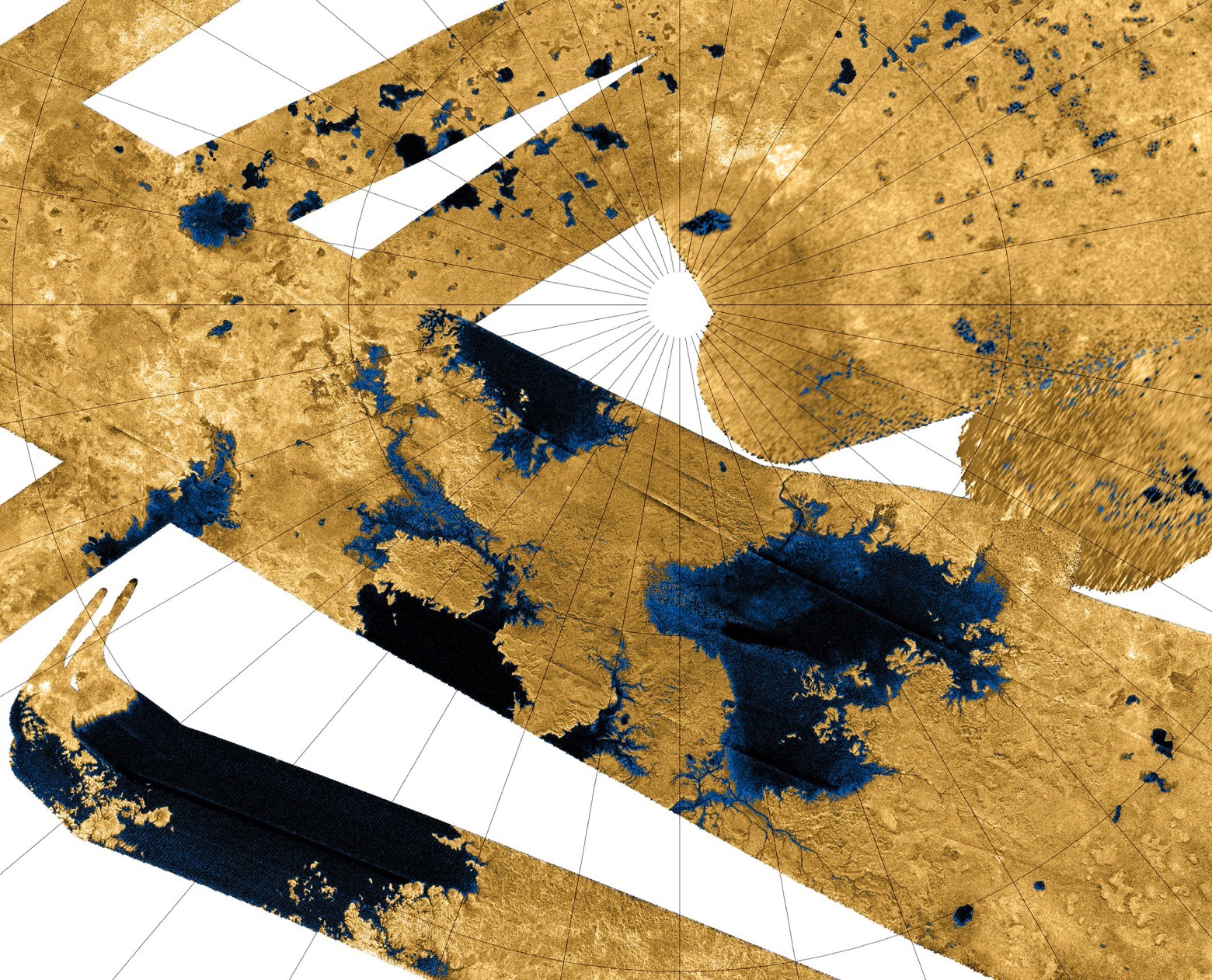
Seas and Lakes on Titan. Photo: NASA / JPL-Caltech / USGS
Most importantly, Titan has natural protection from radiation. This is a nitrogen atmosphere, which is 50% denser than the earth. An additional shield provides the magnetosphere of Saturn. What definitely will not be on Titan is a lack of fuel. Ilon Musk is now deciding how to synthesize hydrocarbons on Mars, and on Titan they are everywhere.
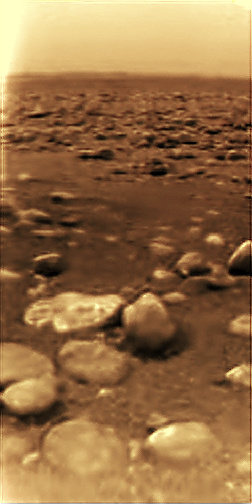 True, in the atmosphere of Titan there is no oxygen (nitrogen is 98.4%, the rest is argon and methane), but deposits of water ice are located directly below the surface of the satellite. From there you can easily extract oxygen for breathing and burning hydrocarbons.
True, in the atmosphere of Titan there is no oxygen (nitrogen is 98.4%, the rest is argon and methane), but deposits of water ice are located directly below the surface of the satellite. From there you can easily extract oxygen for breathing and burning hydrocarbons.Atmospheric pressure on Titan is quite normal. Colonists can move on the surface without spacesuits. Only warm clothes and breathing mask. Houses can be built from plastics based on the same hydrocarbons. Inside sealed rooms - air suitable for breathing with oxygen. The simplicity of construction allows you to quickly build large buildings, this is not digging tunnels.
Amanda Hendricks from NASA and her associates say that the Titans will receive not only a comfortable place to live, but also unique opportunities for recreation and entertainment. For example, they can fly. Low gravity and dense atmosphere make it possible to safely fly with the wings on the back. Even if the wings fall off in flight - do not worry, the landing will be quite soft with an acceleration of 1.352 m / s 2 . The acceleration of free fall is seven times less than that of the earth, and the maximum speed of falling, taking into account air resistance, is ten times less. When falling from any height, it is impossible to accelerate more than about 20 km / h. If you count, then the body accelerates to this speed when falling from a height of 1.57 meters to the Earth (h = v 2 / 2g). You can tuck your foot, nothing more.
Titan seems to be a better place to live than Mars. Just get there much further. On existing engines, the trip will take seven years. So the main problem for the establishment of a colony on Titan is the development of more efficient space engines. When such engines appear, people will surely create a colony on Titan, sooner or later.
Source: https://habr.com/ru/post/399609/
All Articles